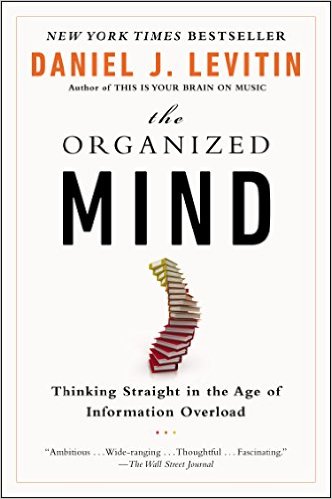Energy Management vs. Time Management
These are the points I captured while reading 1st part of “Too much information, too many decisions” chapter of the book “The Organized Mind: Thinking Straight in the Age of Information Overload” by Dr. Daniel J. Levitin. I put my points and cross-references next to them.
- Every day, we are confronted with dozens of decisions, most of which we would characterize as insignificant or unimportant.
|| This perfectly applies to testing, too. During any session testers encounter dozens (if not hundreds) bits of information about the product. They need to remember what’s important, decide whether there’s a problem, and compare current results with relevant results from the previous sessions.
- Satisfice – use what’s “good enough”. Don’t overspend time for insignificant improvements.
- Decision-making strategy
- Time management factor
|| I can’t help but immediately think of James Bach. Why? Because “satisfice” is the name of his web-site and “Satisfice Test Strategy Model” / “Good Enough Testing” was earlier name of now-called “Heuristic Test Strategy Model” / “Rapid Software Testing”.
|| Thanks to James Bach I learnt about the original Satisfice term coined by Herbert Simon.
|| In application to software development, Satisfice approach is what should be guiding project planning and all documentation activities. Alas, it doesn’t happen often enough.
|| As an energy / time management heuristic Satisfice approach is a way to deliver faster, be more proactive, and avoid procrastination.
- Happy people are not people who have more.
- Happy people are happy with what they already have.
|| I agree in the sense of material possessions, and add in the sense of knowledge: learning process is exciting, too.
- Making decisions requires brain energy
- There’s a certain limit of decisions a brain can take in a period of time.
- Regardless, whether they’re trivial or complex.
|| After reading the book and consciously paying attention to this I can add that it also depends on the physical and mental state, as well as the environment. When worried about something it’s practically impossible to reach high concentration. Or when feeling exhausted. And if my neighbors have loud discussion I can’t help but keep overhearing and losing my own line of thought.
- Decision Overload ->
- Loss of productivity
- Loss of motivation
|| This also applies to too many undone things. I generally have one big (and ever growing) list in my notebook, but for the day I put together a “to do list” on a separate sheet, and track the progress within. Something may get added or removed, something might carry over to the next day, but I intentionally limit my daily focus to avoid distraction and demotivation. 4 out 5 done looks much better than 4 out of 40!
- The decision-making network in our brain does not prioritize
- The processing capacity of the conscious mind has been estimated at 120 bits per second.
- A lot more is being processed subconsciously
|| After reading of this book I got seriously interested – how I can better utilize my processing powers through subconsciousness? I don’t have much to share about my experience in this field but I’d love to learn from other people. Especially if someone has practiced it for testing.
- The attentional filter
- A subconscious “judgment device” sorting out information that’s deemed as unimportant
- A protection mechanism
- Has limit of how many things we can attend to
|| I don’t think we can change or “train” our attentional filter somehow but explicitly labeling information helps me to remember things better.
|| And, as it goes for decision-making, managing the environment to reduce the flow of unimportant / irrelevant information helps to process faster and remember better.
- Focus is the key to productivity and success
|| As I know very well from my personal experience, I have a limited brain energy and must protect my focus time in order not to waste it. For intense thinking kinds of work I take on the tasks in small chunks of time, distributing them based on required focus and energy.
|| I’d do 1-2 intense sessions in the morning, then take a break to walk around, get a coffee, chat with people – to recharge a little. Then I may do less intense work, some routine or administrative tasks, or sorting out emails.
|| Depending on how the day goes, I may get recharged by the afternoon and perform 1-2 more intense sessions.
|| The key is to have multiple priority streams and work on the tasks based on your highest available energy and focus.
|| I’m also in search of effective methods of recharging in work environment.
- Some people, who can afford it, have an “external” attention filter – staff that takes care of routine information processing and decision-making.
|| As service providers we, testers, produce information. It’s a responsibility and a good service to provide relevant and organized information that is easy to comprehend – our clients, who have to make the decisions, will appreciate that.




